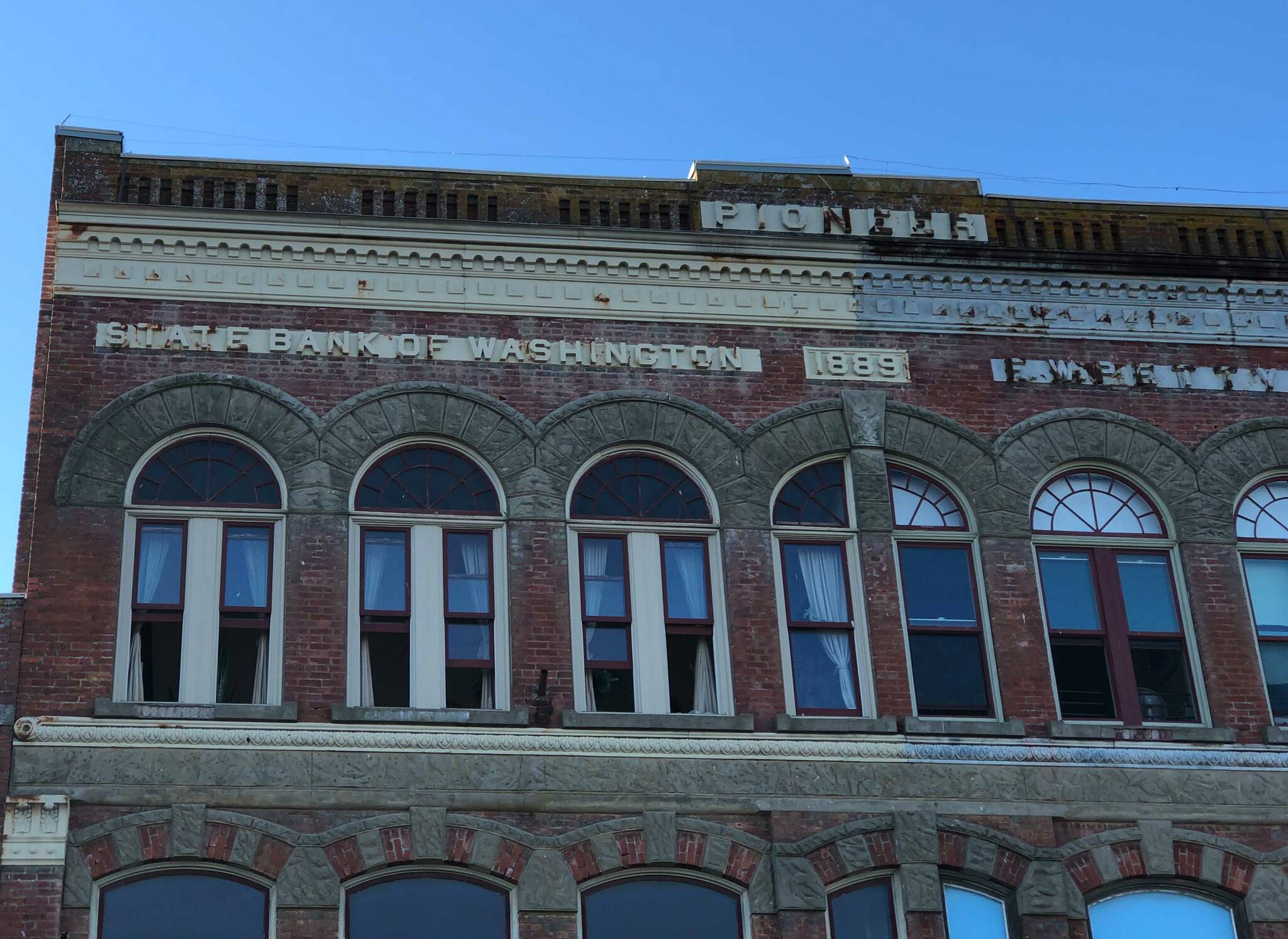By Morf Morford
Tacoma Daily Index
Banks are one of those institutions that most of us use a on a regular basis without thinking much about it.
We pay bills, buy cars or homes, take out business or home loans, rent safety deposit boxes, maybe even write a check or exchange international currency.
We do all this, and more, with the assistance of our local bank. Or at least the local branch of a national or regional bank that might be based many thousands of miles away.
Like I mentioned in the beginning, few of us think about such things.
Most of us establish a bank account (or two) and use it for our basic savings, spending and bill-paying needs.
Banks, to put it mildly, are exceedingly useful and helpful.
And somehow most of us forget, or neglect the fact that banks are themselves businesses.
Most of us assume that banks are there primarily to provide a service.
They do provide an essential service.
But that is not their primary purpose; their primary purpose, as with any business, is to make a profit.
Of course there is nothing wrong with this. Making a profit is exactly how our economic system works.
I just wonder if a for-profit business is the best way for most of us to keep and manage our money.
(For the record, I also wonder if something as basic and essential as health care should be in the hands of a profit oriented business, but that is an entirely different and, of course, more complicated subject.)
Public banks?
A public, even state owned bank, is far from a new or radical idea.
In 1836 Alabama, Kentucky, Illinois, Vermont, Georgia, Tennessee and South Carolina all created banks that were completely owned by the state government.
All of these have since folded.
But in 1919 North Dakota opened up its version of a state owned and operated bank.
The Bank of North Dakota (BND) is still operating – if not flourishing. You can see a summary of its history here: https://bnd.nd.gov/history-of-bnd/.
In 2020 BND reported an ROI of 15%. In 2019 their return on investment was 18.6% – their sixteenth consecutive year of record profits.
The BND maximizes its profits and its ability to serve the community by eliminating profiteering middlemen. It has no private shareholders with a focus on short-term profits, no high-paid executives, no need to advertise for depositors or borrowers, and no need for multiple branches.
It has a massive built-in deposit base, since the state’s revenues must be deposited in the BND by law.
And, perhaps most importantly BND does not compete with North Dakota’s local banks in the retail market but instead partners with them. The local bank services and retains the customer, while the BND helps as needed with capital and liquidity.
Public banking in 2021
Just a few months into 2021 sixteen new bills to form publicly-owned banks or facilitate their formation were introduced in eight U.S. states in January and February.
Two bills for a state-owned bank were introduced in New Mexico, two in Massachusetts, two in New York, one each in Oregon and Hawaii, and Washington State’s Public Bank Bill was re-introduced as a “Substitution.”
Bills for city-owned banks were introduced in Philadelphia and San Francisco, and bills facilitating the formation of public banks or for a feasibility study were introduced in New York, Oregon (three bills), and Hawaii.
In addition, California is expected to introduce a bill for a state-owned bank later this year, and New Jersey is moving forward with a strong commitment from its governor to implement one.
On the federal level, three bills for public banking were also introduced last year: the National Infrastructure Bank Bill (HR 6422), a new Postal Banking Act (S 4614), and the Public Banking Act (HR 8721).
Why the increased interest in public banks?
To put it mildly, COVID has inverted and convoluted our economy like nothing else in our lifetimes.
Nearly 10 million jobs were lost to the lockdowns, over 100,000 businesses closed permanently, and a quarter of the population remains unbanked or underbanked.
At a peak, 18 million people received unemployment benefits, and moratoria on rent and home foreclosures only recently, after multiple extensions, have expired.
Besides individuals and families, state and local governments and school districts are also in dire straits due to the crisis. Their costs have shot up and their tax bases have shrunk.
Housing prices, as we all know, have grown exponentially while wages have only recently nudged up a bit.
Income inequality is at an all time high.
Privately owned banks, at a time of economic distress for millions, showed record profits – mostly from overdraft fees – JP Morgan Chase, for example, made a stunning $1.5 billion in revenue on overdraft alone in 2020, according to recent FDIC filings.
During that same period, Bank of America made $1.1 billion in profits, and Wells Fargo made $1.3 billion. The final three months of 2020, when the pandemic was at its most widespread and deadliest, were also the year’s most profitable, with all three of those banks pulling down over $300 million just in overdraft fees. So while Americans suffered through the worst wave of our worst public-health crisis in 100 years, with unemployment sky-high and intermittently lapsed federal benefits, the country’s biggest banks were gouging the poorest Americans for billions of dollars in punitive fees.
Even before COVID, in 2019 banks made $11 billion in revenue on overdraft fees alone – almost 5 percent of total bank revenue.
Some banks, or at least credit unions, like BECU, suspended overdraft fees in these unprecedented times.
In short, it is time for a new, or in this case, old, solution for a more equal and stable economic recovery.
Public banking, by whatever means, is certainly something we will be hearing more about in the years to come.






